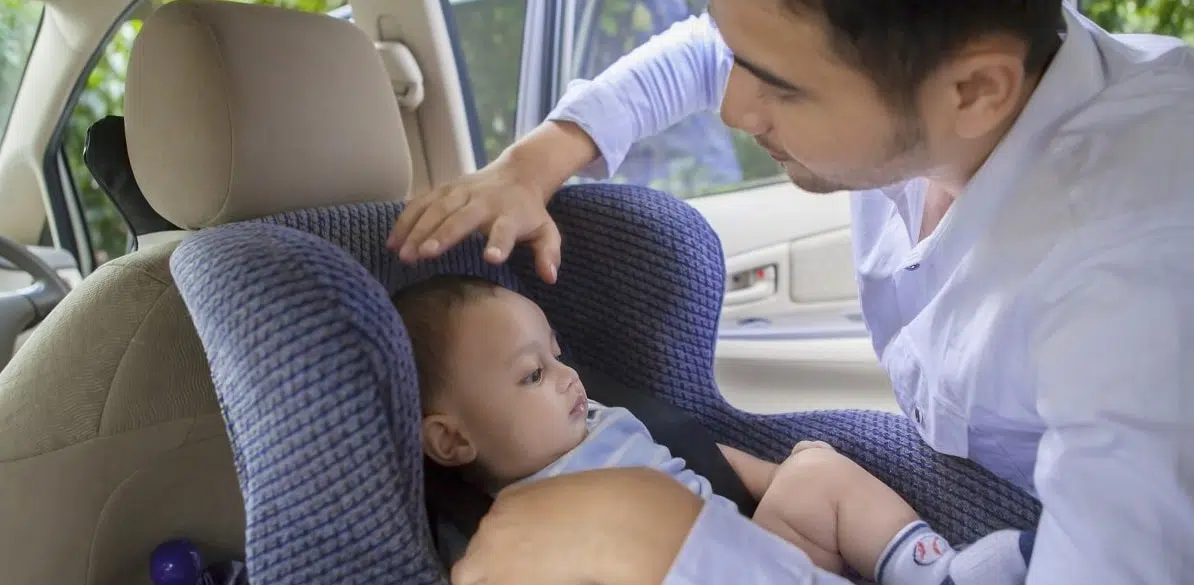What is the best way for children to avoid the dreaded whiplash injuries?

Children’s necks are not strong enough to withstand the stress loads that arise in collisions, especially head-on collisions. In fact, neck injuries are the most common injuries in children under two who are involved in traffic accidents, according to the Spanish Directorate General for Traffic (DGT). Let’s take a look at the different ways of protecting young children from these injuries.
The most common injuries in children up to two years of age in traffic accidents are neck injuries, due to the size and weight of the head and the fragility of the spine, according to information from the DGT. Between the ages of two and four, the most common injuries are to the head as the vertebrae are not strong enough to withstand sudden deceleration, while between the ages of four and ten abdominal injuries are the most common, due to the higher risk of internal injury or hemorrhage, as the organs are not yet sufficiently attached to the abdominal structure.
Rear-facing is the best way
Numerous studies and crash tests have shown that the most effective way to protect young children from neck injuries is by putting them in rear-facing child seats.
In the event of an impact, especially a frontal one, the child’s neck needs to withstand a force greater than what it is capable of withstanding. If a rear-facing child restraint system is used, the child’s back absorbs the bulk of the impact stress. Several crash test demos show how in these cases the child’s head does not jerk forward in the same way so the neck is not stretched to the same degree.
You can see the difference in this video:
According to ANEC, the European association that defends consumer interests in the process of standardization and certification, “it has been proven that children sitting in forward-facing seats have suffered from head, neck, chest or abdominal injuries in circumstances where rear-facing seats would have provided much greater protection.”
In addition, Euro NCAP, the European New Car Assessment Program, also supports putting children in rear-facing seats and run checks to ensure that vehicles allow the installation of these kinds of seats.
Remember that it is mandatory for children to travel in a rear-facing seat up to the age of 15 months and it is advisable to continue up to the age of four. Indeed, we recommend doing so for as long as possible.
If the child is forced to travel in the front passenger seat (as an exception to the rule), the passenger seat airbag must always be disabled.
Neck protection in forward-facing seats
Once the child is able to travel in a front-facing child seat, it is important to choose a seat suitable for the child’s height and one that has a head rest. The height of head rests is often adjustable and the ideal situation is for the CSR to be adapted to the child’s stature. The head rest provides additional comfort as well as protection in the event of an impact.
It is important that the child’s head never goes above the top of the head rest.
There are various products on the market to even further enhance the protection of child seats such as U-shaped neck cushions and cervical pillows.
Neck protection on boosters used with seat belts
The booster seat is designed for children who are under 135 cm tall and hence cannot wear a seat belt properly in the back seats.
Booster seats can come either with or without a back rest. The latter form part of CRS Group III and are designed for older children, usually aged 6 to 11, weighing between 22 and 36 kilos.
As shown in the infographic “The correct way to sit a child in a booster seat” (961 KB), it is important to ensure that the child’s head and the head rest are at exactly the same height. As is the case for other adult passengers, the main purpose of the head rest is to provide the maximum protection for the head and neck, which is why it must be fixed at the right height.
The same applies when the child stops using the booster seat and starts using a regular seat with a seat belt.
